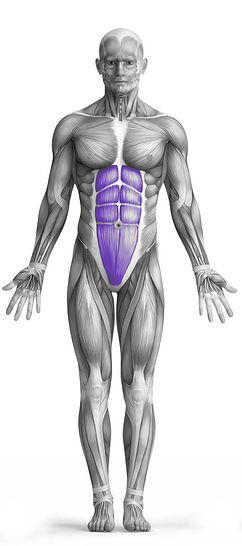Valslide Body Saw 101 Video Tutorial
0

Exercise Synopsis
Target Muscle Group
Abs
Secondary Targets
None
Execution
Compound
Force Type
Isometric
Required Equipment
Valslide
Fitness Level
Intermediate
Variations
None
Alternatives
None
Timer
Hour
Minute
Second
Stopwatch
00:00:00:00
Overview
The Valslide Body Saw is an effective core exercise that primarily targets the abdominal muscles. By using a Valslide, you engage the abs as you move your body back and forth, creating a saw-like motion. This dynamic movement helps improve core strength and stability. The Valslide Body Saw requires minimal equipment, making it an excellent addition to any workout routine focused on strengthening the core. While the exercise primarily focuses on the abs, it also challenges the shoulders and chest for stability during the motion.
How to Perform
Start by getting into a plank position, placing your feet on the Valslides, ensuring your body is straight and your core is engaged.
Press your forearms firmly into the floor, and then push your feet backward, allowing your body to move in a controlled manner, activating your abs.
Using your lats, pull your body forward, keeping your core tight and your body in a straight line as you return to the starting position.
Gradually move back to the original plank position, maintaining stability, and repeat the motion for the required number of repetitions.
★ Bonus: For exercises that involve external weights (such as dumbbells, barbells, or machines), the One Rep Max (1RM) calculator can help you estimate your maximum lifting capacity. Use it to track your strength progress and adjust your training for optimal results.
Tips
Throughout the exercise, make sure your lower back stays flat and does not arch. If you notice any arching, stop the set, rest, and then resume focusing on maintaining a strong, stable core. Engage your abs as if preparing for a punch and squeeze your glutes to support the movement.
If you struggle to keep a neutral spine during the exercise, consider trying alternative exercises like wall press heel taps or hip extensions. These variations offer more stability and reduce the length of the lever, making the movement easier to control.
Press your elbows into the floor to activate the serratus anterior. Your upper back should remain engaged, with no space between your shoulder blades, helping to stabilize your body during the movement.
Avoid holding your breath throughout the exercise. You should not rely on your breathing to compensate for any lack of stability. Focus on maintaining proper form and position while breathing steadily.
If you don’t have access to Valslides, alternatives like a slide board, towel, or paper plates on a smooth surface such as wood floors can be used to achieve similar results.
How Not to Perform
Avoid Arching Your Lower Back: Do not let your lower back sag or over-arch during the movement. This places unnecessary strain on the spine and reduces core engagement. Focus on keeping your core tight to maintain a neutral spine throughout the exercise.
Don’t Use Momentum: Refrain from swinging your body back and forth using momentum. Instead, concentrate on slow, controlled movements to fully engage the target muscles (abs) and prevent wasting energy.
Don’t Let Your Hips Drop: Keep your hips level with your shoulders. Dropping your hips can strain your lower back and take the focus off your abs. Keep your glutes and core engaged to maintain stability.
Avoid Holding Your Breath: Do not hold your breath to compensate for lack of stability. This can cause unnecessary tension and disrupt the flow of the exercise. Focus on steady, controlled breathing to maintain proper form and reduce fatigue.
Don’t Overextend: Avoid pushing your feet too far back or pulling too far forward, which can compromise your form. Instead, focus on a moderate range of motion that keeps the movement controlled and effective.
Don’t Let Your Elbows Flares: Keep your elbows positioned directly under your shoulders and press them into the floor to engage your upper back and serratus anterior. Allowing your elbows to flare out can reduce upper body stability and affect the quality of the movement.
Avoid Straining Your Neck: Keep your neck aligned with your spine and avoid looking up or down excessively. Keep your head in a neutral position to prevent neck strain.
Don’t Use Excessive Speed: Rushing through the exercise can lead to poor form and a lack of proper muscle engagement. Focus on slow, deliberate movements to ensure that the target muscles (abs) are properly activated.
Avoid Focusing on the Shoulders: While the shoulders play a stabilizing role, the primary focus should be on the core. Avoid letting your shoulders bear too much weight by shifting the focus to your abdominal muscles.
Variations
Variations of fitness exercises refer to different ways of performing a specific exercise or movement to target various muscle groups, intensities, or goals. These variations aim to challenge the body differently, prevent plateaus, and cater to individuals with varying fitness levels.
Alternatives
Alternative exercises in fitness refer to different movements or activities that target similar muscle groups or serve the same training purpose as the primary exercise. These alternative exercises can be used as substitutes when the original exercise is unavailable or challenging to perform due to various reasons such as equipment limitations, injuries, or personal preferences.








